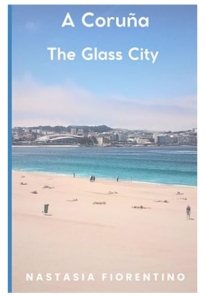History
Spain was conquered by the Carthaginians and later by the Romans who spread the Latin language and civilization.
When the Roman Empire collapsed there came the Vandals, the Visigoths and finally the Arabs.
Later the Spaniards repulsed the invaders and towards the end of 1400 there was liberation and unification of the country.
With the colonial empire in America, Spain became rich, but economy did not develop properly and since the beginning of 17th century the country experienced a deep economic crisis.
In 1931 it was abolished the monarchy and proclaimed the Republic.
But the political conflicts between right and left, led to the Civil War (1936-39) and to the dictatorial regime, Francoism, lasted until 1975.
With the Constitution of 1978 Spain is a hereditary constitutional monarchy, where Cortes have the legislative power and the Government has the executive power.
Currently Spain is a democratic country and economic, social and cultural developed.
Art and Architecture
In Spain we have a distinction between north and south’s art and architecture.
In the south prevails the Arabian art visible in buildings such as the Great Mosque of Cordoba and the Alhambra of Granada.
In the north there is the Romanesque art visible in churches, monasteries, castles and civil buildings.
While the Gothic style is a bit everywhere: in the Cathedral of Girona, in the Cathedral of Santa Maria del Mar in Barcelona, in the Cathedral of Seville, Salamanca and Segovia.
The most famous architect is Antoni Gaudi, the author of works such as the Sagrada Familia, Casa Milá and Batlló and Parc Guell.
About art, in 20th century spreads impressionism with Joaquin Sorolla, ultraísmo with Daniel Vasquez Diaz, cubism with Pablo Picasso and surrealism with Joan Miró, Salvador Dalí and Josep Sert.
Hispanic culture
During the centuries, Spanish cultural heritage has been raised in all its forms of expression.
Pablo Picasso, Salvador Dalí and Francisco Goya, to name some of the most famous Spanish painters.
Cervantes, author of Don Quixote, considered the “father of Spanish literature” and Federico Garcia Lorca, the poet most famous of 20th century.
Flamenco is the most famous dance, but not the only one present in the history of Spanish traditional music.
About cinema and theater there are:
- Festival of the Classical Theatre of Mérida
- International Festival of Almagro
- Grec in Barcelona
- International Film Festival of San Sebastián
- International Fantastic Film Festival of Catalonia in Sitges.
The Museum of Prado, the Thyssen-Bornemisza Museum and the Guggenheim in Bilbao are just some of the museums in which are kept the biggest masterpieces of the history of universal and Spanish painting.
At the end among the best-known festivals and folk traditions there are Corrida (bullfighting), the festival of San Fermin and the Tomatina.



